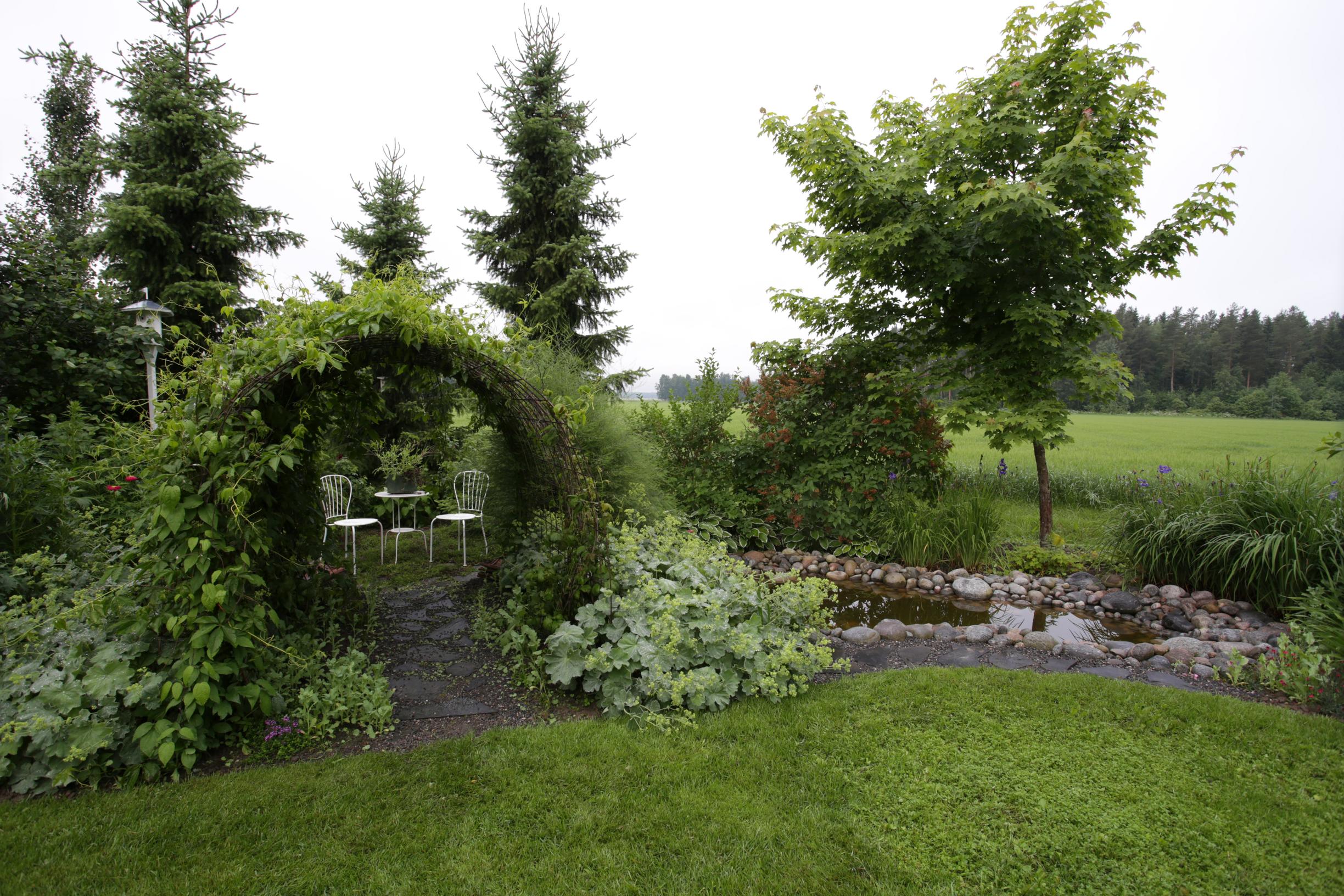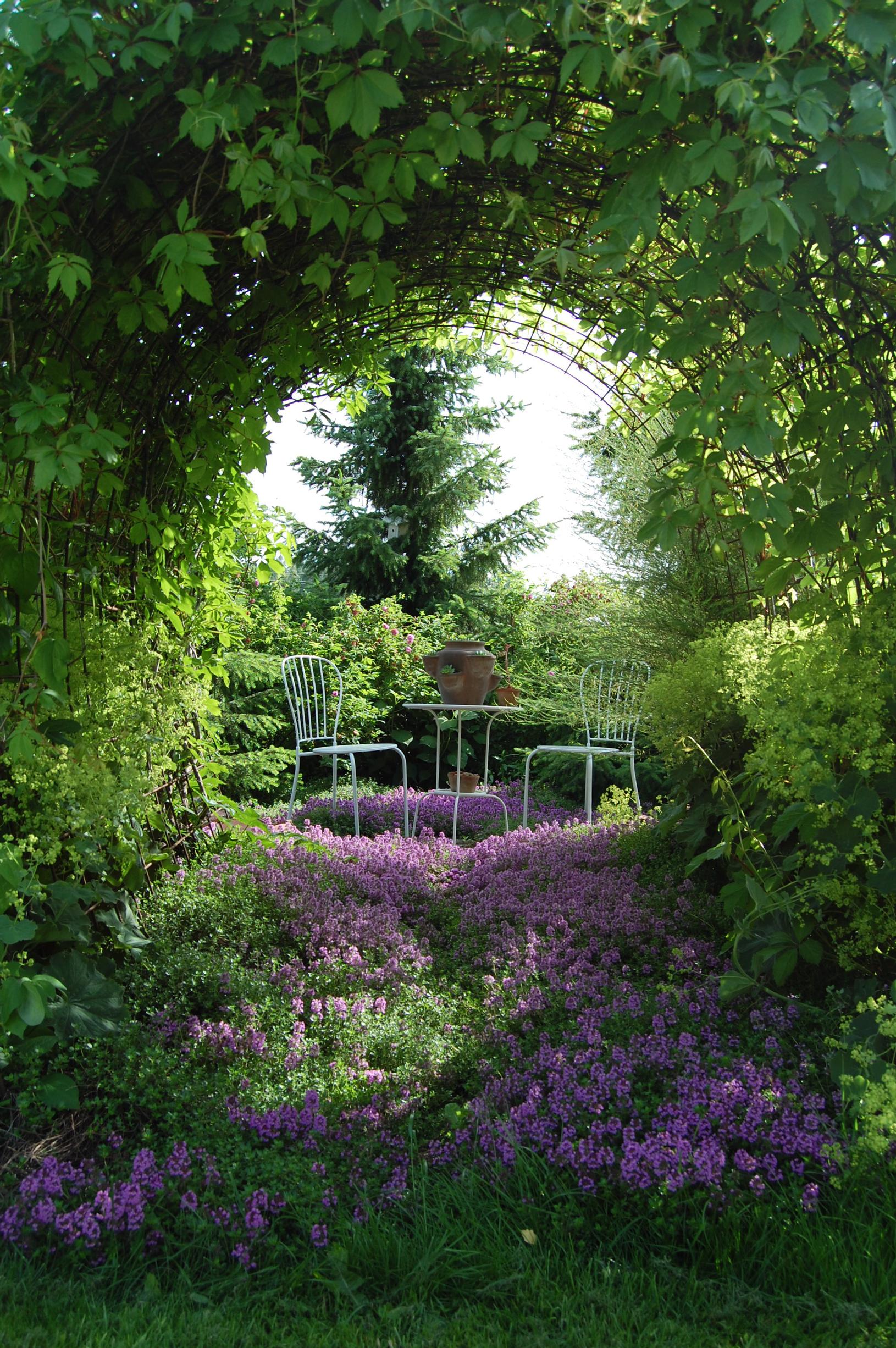
Mesmerizing Virginia creeper arch: hand-bent from rebar, still standing after 12 years!
A neighbor gave Maria and Markku Laukkonen a leftover piece of rebar mesh, and they instantly knew the perfect spot for it. Within a few years, the structure transformed into a stunning Virginia creeper arch, creating a breathtaking climbing tunnel!
How did you come up with the idea for a DIY rebar climbing arch?
It all started with a leftover piece of rebar mesh lying in our neighbor’s ditch after a building project. I asked if I could buy it, but my neighbor happily gave it away. That meant the tunnel was free, especially since we already had the rebar rods to secure it at home.
Did you already have a spot in mind for the Virginia creeper arch?
The spot was immediately clear. I had laid out a circular slate stone area for lounging, sheltered by three Serbian spruces, and got the idea to create a climbing archway that would lead into the circle.
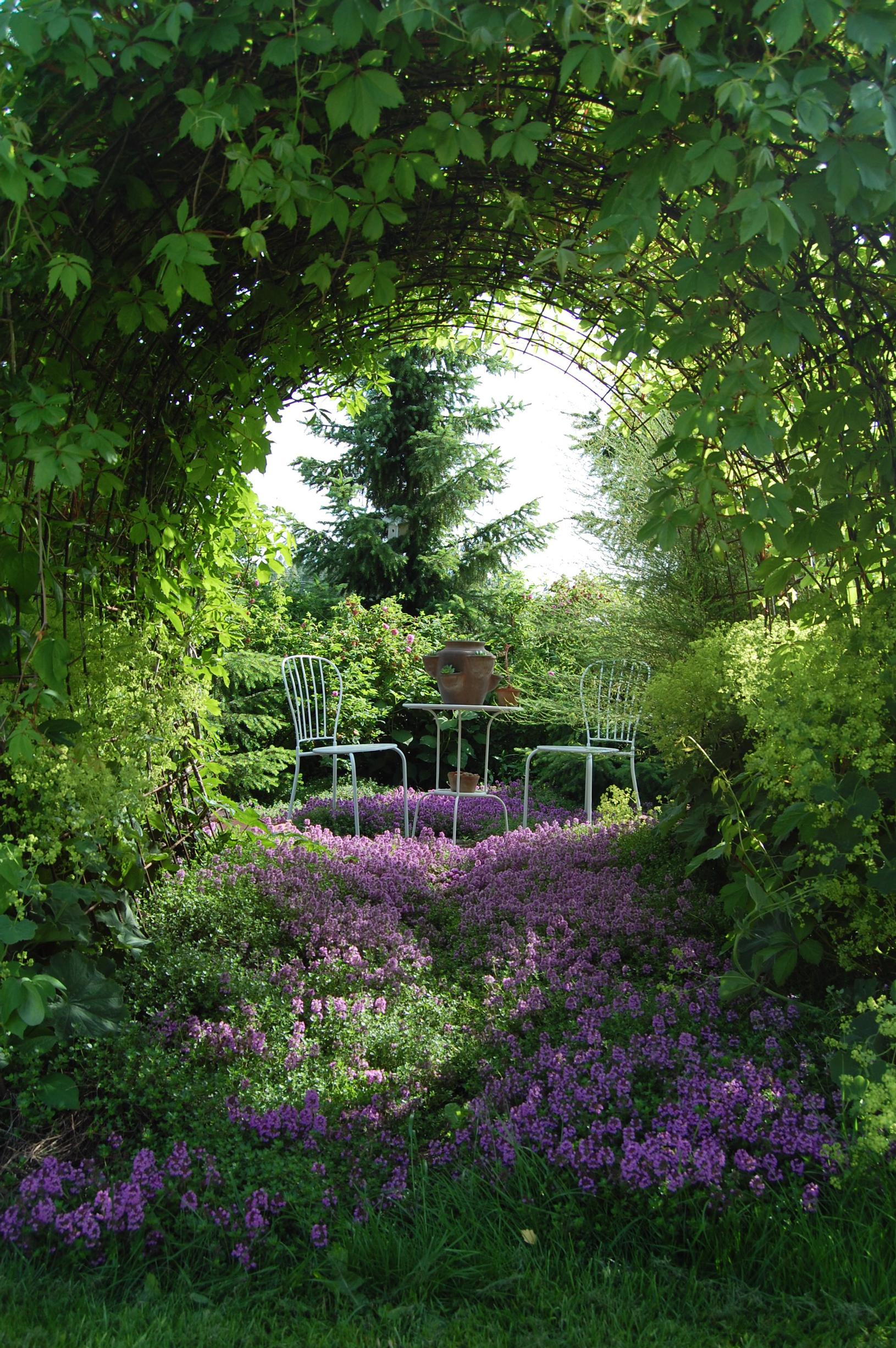
How did you bend the mesh into an arch shape?
My husband and I bent it by hand. It was a bit risky because the mesh was under a lot of tension once it was curved. I suggest having at least four people to help, to keep things safe.
The arch is most stunning in late summer, when the clematis blooms, and in fall, when the Virginia creeper turns red.
How did you fasten the mesh to the ground?
The mesh is anchored from two opposite sides. First, we secured one edge by hammering in long, U-shaped rebar stakes, each a few dozen centimeters long, spaced about 15 cm apart. Then we bent the mesh into an arch and anchored the other side in the same way. More people holding the mesh at that point would have made it safer.
We have dense clay soil, so the rebar stakes went in deep with a sturdy mallet and have stayed put for at least 12 years without needing any adjustments! If your soil is looser, I recommend something like concrete footings.
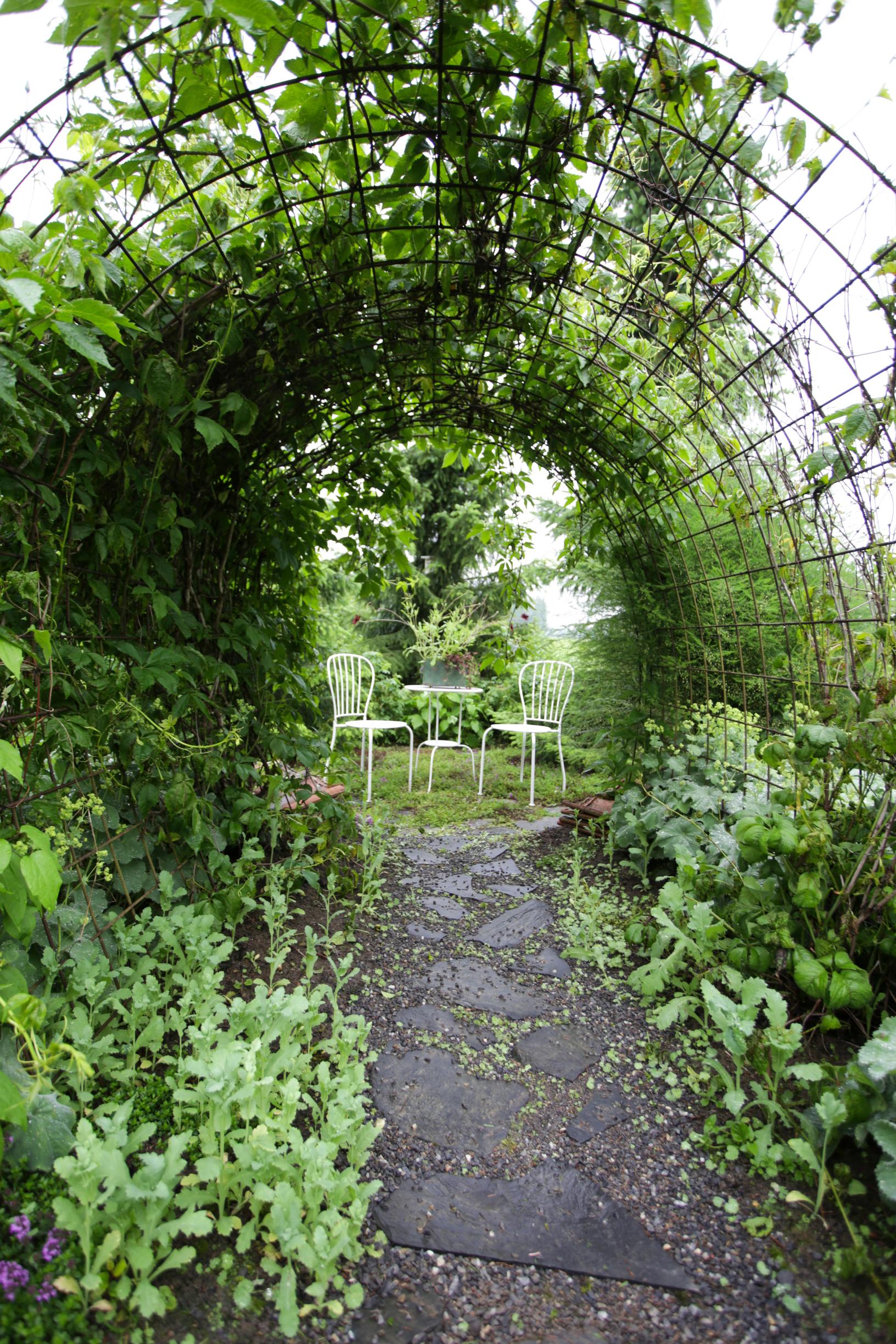
What tools did you use?
We used heavy-duty wire cutters to cut the rebar and a mallet to drive the stakes into the ground.
When does the arch look best?
Probably in late summer when the clematis is in bloom, and again in fall when the Virginia creeper turns red.
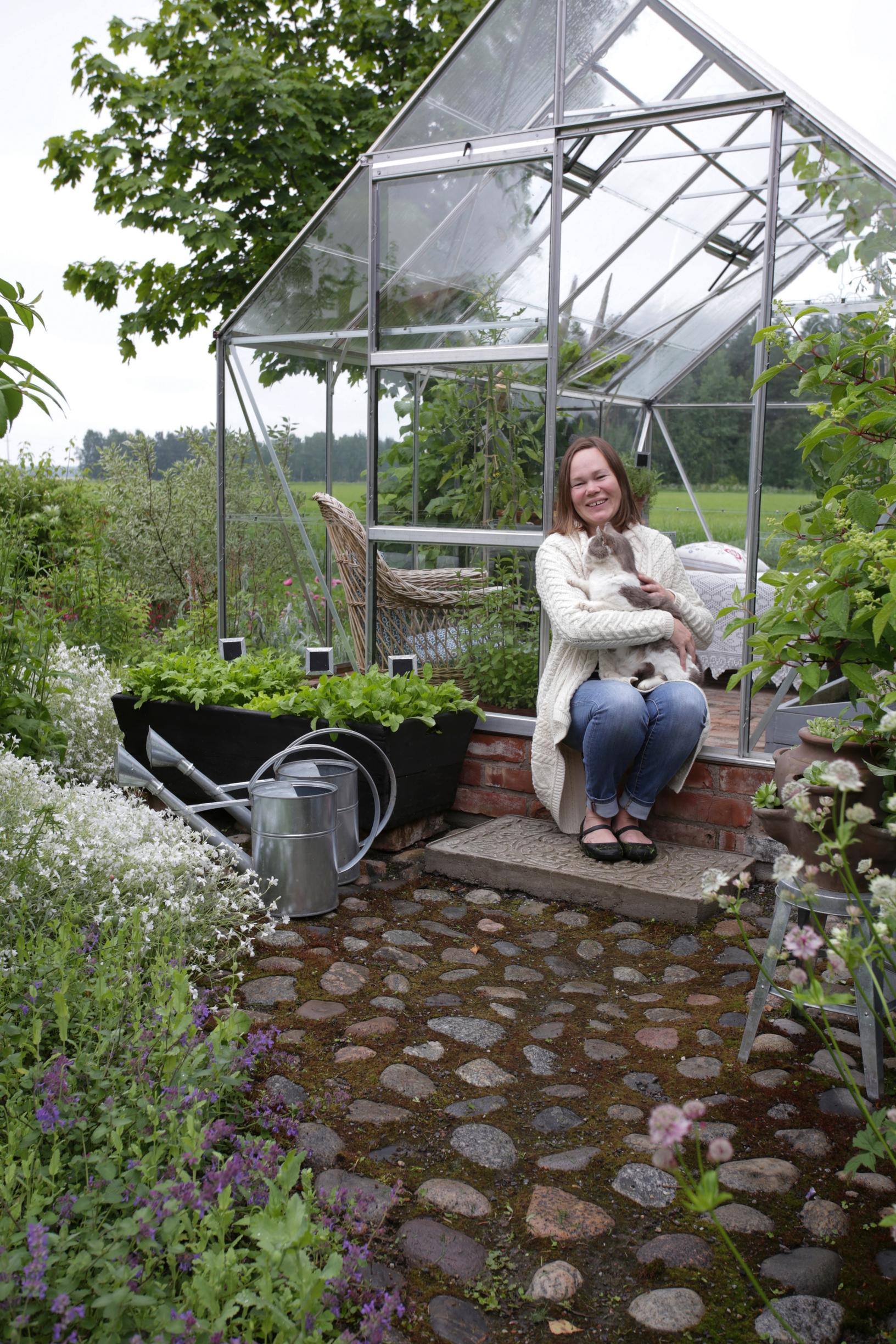
What plants climb along the tunnel?
At the front of the mesh we have a ‘Rouge Cardinal’ clematis and a few others whose names I can’t recall. I chose Virginia creeper because it’s dense, fast-growing, and has gorgeous fall color.
